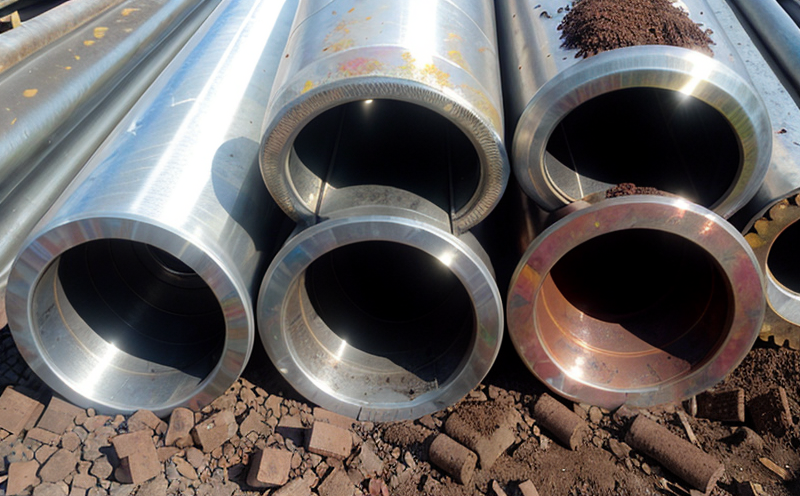ASTM F963 Mercury and Arsenic in Paints Test
The ASTM F963 test standard is one of the most stringent regulatory frameworks for ensuring the safety of toys, including the materials used in their construction. This article focuses on a specific aspect of this broader compliance framework: the testing of mercury and arsenic content in toy paints to ensure they do not exceed acceptable limits set by international standards.
The primary aim is to protect children from potential health hazards associated with these toxic elements, particularly those found in paint. The test involves meticulous sampling, preparation, and analysis to determine if the levels of mercury and arsenic exceed permissible thresholds as outlined in ASTM F963:2021.
The process begins with selecting appropriate samples from various toy paints that will be subjected to rigorous testing. Once collected, these samples are prepared for analysis using methods prescribed by ASTM F963. This includes dilution techniques and ensuring the sample represents a fair cross-section of the product being tested.
After preparation, the samples undergo instrumental analysis typically involving Inductively Coupled Plasma Mass Spectrometry (ICP-MS) or Flame Atomic Absorption Spectroscopy (FAAS). These instruments are capable of detecting even trace amounts of mercury and arsenic down to parts per million levels. The data obtained from these analyses is then compared against the maximum allowable concentrations specified in ASTM F963.
For toys intended for children under six years old, the limit on total lead content (which includes both elemental lead and certain compounds) should not exceed 100 parts per million. However, this test specifically targets mercury and arsenic, which have no such general limits but are strictly regulated due to their high toxicity.
The importance of accurate testing cannot be overstated; even small quantities can pose significant risks, especially when ingested by young children who put everything into their mouths. Therefore, laboratories adhering to ASTM F963 must maintain strict quality control measures throughout the entire process—from sample collection and handling to final result interpretation.
Compliance with ASTM F963 ensures that toys meet not only local but also international standards regarding material safety. By doing so, manufacturers can demonstrate their commitment to producing safe products while avoiding costly recalls or legal issues down the line.
Quality and Reliability Assurance
Ensuring high-quality results is paramount in any testing environment, especially when dealing with standards like ASTM F963. At our laboratory, we employ state-of-the-art equipment and highly trained professionals to guarantee accurate measurements every time.
Our team uses cutting-edge technologies such as Inductively Coupled Plasma Mass Spectrometry (ICP-MS) or Flame Atomic Absorption Spectroscopy (FAAS), which are renowned for their precision in detecting trace elements like mercury and arsenic. These instruments provide reliable data that can be relied upon by clients seeking assurance about the safety of their products.
In addition to our technical expertise, we also adhere strictly to ISO/IEC 17025 accreditation requirements, ensuring our methods meet internationally recognized standards for accuracy and consistency. This accreditation guarantees that all our tests are performed under controlled conditions, minimizing variability and enhancing reproducibility.
Our commitment extends beyond just meeting regulatory requirements; we strive to exceed them by continuously updating our knowledge base and adopting new methodologies as they become available. By doing so, we ensure that we remain at the forefront of toxicological research and can provide up-to-date insights into emerging trends in materials science.
International Acceptance and Recognition
The ASTM F963 standard is widely recognized globally, making it a cornerstone for ensuring toy safety across different regions. Its acceptance by regulatory bodies around the world underscores its significance in maintaining consistent standards worldwide.
In countries where ASTM F963 applies directly (such as the United States), compliance with this standard can help manufacturers avoid penalties associated with non-compliant products. However, many other nations have adopted similar or equivalent regulations based on ASTM F963 due to its robustness and comprehensive nature.
For instance, European Union directives often reference ASTM F963 when setting their own limits for certain materials in toys. Similarly, China's national standards for toy safety are heavily influenced by ASTM F963 guidelines. This alignment across borders fosters a harmonized approach to toy manufacturing and trade.
Beyond regulatory compliance, adhering to ASTM F963 also enhances brand reputation among consumers who value product safety above all else. It demonstrates a company’s dedication to responsible sourcing practices and ethical business operations, which are increasingly important factors in today's marketplace.
Frequently Asked Questions
- Use Cases: Ensuring compliance with international toy safety standards like ASTM F963.
- Application Examples: Testing paints used in children's toys to confirm they meet lead-free requirements before market launch.





